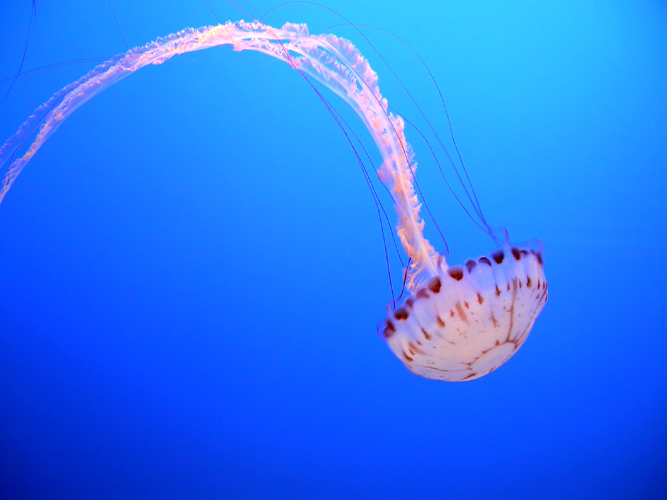Looks like scientists may have stumbled upon a new cure for jellyfish stings. Scientists at the University of Hawaii found zinc gluconate inhibits the action of jellyfish venom. From Scientific American:
Yanagihara used electron microscopy to visualize the venom’s affects on blood cells, and as suspected, found that venom porins create holes that lead to cell rupture. But as previous clinical research had shown, the cells bursting wasn’t the real issue; Yanagihara found that instead, for several minutes before they break apart, red blood cells leaked potassium. Animal models confirmed that this sudden spike of potassium in the blood stream, termed hyperkalemia, is what leads to rapid changes in heart rate and function and, ultimately, the cardiovascular collapse that causes death by jellyfish. With the physiology of stings revealed, Yanagihara could finally start the laborious task of finding a way to stop the venom in its tracks.
Jellies aren’t the only animals that create porins. “The structural motif of the cubozoan porin reminded me of the bacterial porins,” said Yanagihara. “I scoured that literature to look for inhibitors of the self assembly of those pore forming toxins and discovered studies from the 1940s even as far back as the 1890′s citing zinc ion as useful in the inhibition of bacterial driven lytic reactions.” Yanagihara tested over 100 compounds to see if they inhibited jellyfish venom, and found that one of the safest—zinc gluconate—worked well.
Scientists aren’t 100% sure how zinc compounds inhibit the porins, but they believe that the zinc disrupts the binding domains necessary for the proteins to assemble to form pores. In in vitro models, Yanagihara found that a low dose of zinc gluconate completely prevented the venom’s blood cell busting effect. She then tested the compound in animal models, and found it worked better than the commercially available antivenom for box jelly stings, keeping the mice alive more than twice as long as the antivenom.

